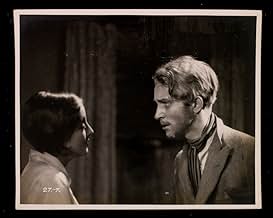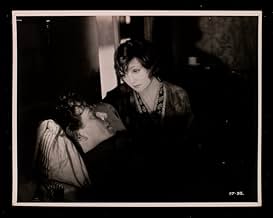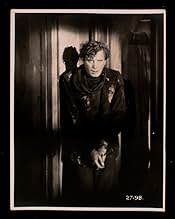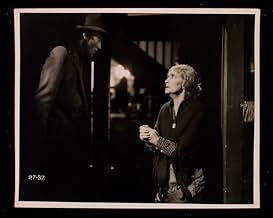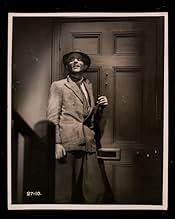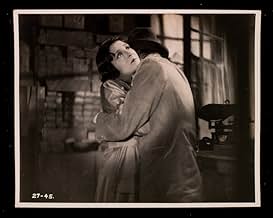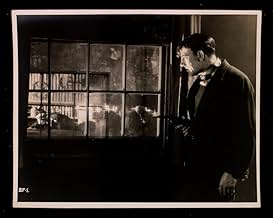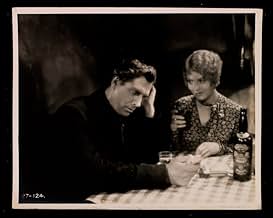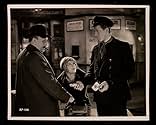Ajouter une intrigue dans votre langueIn 1920s Ireland, an IRA man betrays his best friend to the police, mistakenly believing him to be his mistress's lover.In 1920s Ireland, an IRA man betrays his best friend to the police, mistakenly believing him to be his mistress's lover.In 1920s Ireland, an IRA man betrays his best friend to the police, mistakenly believing him to be his mistress's lover.
Johnny Butt
- Publican
- (uncredited)
Ray Milland
- Sharpshooter
- (uncredited)
Ellen Pollock
- Prostitute
- (uncredited)
Harry Terry
- Gallagher's Henchman
- (uncredited)
Histoire
Le saviez-vous
- AnecdotesHungarian actress Lya De Putti's voice was dubbed--not with an Irish accent, as the character called for, but, for some reason, with an upper-class English accent. It was her last film.
- GaffesEvery character speaks with a middle-class English accent - hardly likely for the Dublin setting.
- Autres versionsIn 2016 the BFI (British Film Institute) restored the original silent version of the film, eliminating the elementary spoken passages. The BFI commissioned a new music score from Garth Knox. The running time of the restored version is 100 minutes.
- ConnexionsFeatured in Elstree Story (1952)
Commentaire en vedette
Until I found "The Informer" (1929), I had no idea that the John Ford version from 1935 wasn't the first. I can understand why they remade the film so quickly, however, as back in the 1930s they remade EVERYTHING (or so it seems). Plus, the 1929 version was a mostly silent film....and remaking it in full sound made sense.
Unlike the American version, this British film does not talk about the IRA and the closest you get to this is when they talk about 'the Party'...which was perhaps a subtle nod to the IRA or Sinn Fein. I can understand this, as British audiences of the time wouldn't have flocked to the theaters to see a film sympathetic to the Irish cause. Think about it...only a few short years earlier the Irish gained their independence after a bloody civil war!
The film begins with a gang of criminals or anarchists (who knows?) talking about how a truce will begin with the police. However, only moments later, the police raid the place and the Chief of police is killed. Francis is admonished to run for it...but before leaving the country he stops to see his girlfriend. Unfortunately, she's fallen for Gypo and tells Francis. However, Gypo oversees them and assumes she's cheating on him....so he rushes to the police to inform them where the killer is hiding. Unfortunately for Gypo, someone oversees this and soon the underworld knows of Gypo's infamy.
"The Informer" is a hybrid film....pretty much a silent film with sound effects and music. However, 45 minutes into the film, suddenly there is dialog...and difficult to understand dialog because the sound technology they were using was poor. This is NOT unusual--many American silents were retroactively turned into 'talkies' by adding a few talking scenes....much like in "The Jazz Singer". In this case, I think they changed their minds mid-movie and switched it from silent to sound.
So is it any good? Yes...much of it's very nice...especially the cinematograpy. Also, the John Ford version suffers from some overacting...and oddly the silent is better acted in general. But given it's a hybrid film, I can easily understand why they re-shot the picture only six years later....and this time in 100% sound.
Unlike the American version, this British film does not talk about the IRA and the closest you get to this is when they talk about 'the Party'...which was perhaps a subtle nod to the IRA or Sinn Fein. I can understand this, as British audiences of the time wouldn't have flocked to the theaters to see a film sympathetic to the Irish cause. Think about it...only a few short years earlier the Irish gained their independence after a bloody civil war!
The film begins with a gang of criminals or anarchists (who knows?) talking about how a truce will begin with the police. However, only moments later, the police raid the place and the Chief of police is killed. Francis is admonished to run for it...but before leaving the country he stops to see his girlfriend. Unfortunately, she's fallen for Gypo and tells Francis. However, Gypo oversees them and assumes she's cheating on him....so he rushes to the police to inform them where the killer is hiding. Unfortunately for Gypo, someone oversees this and soon the underworld knows of Gypo's infamy.
"The Informer" is a hybrid film....pretty much a silent film with sound effects and music. However, 45 minutes into the film, suddenly there is dialog...and difficult to understand dialog because the sound technology they were using was poor. This is NOT unusual--many American silents were retroactively turned into 'talkies' by adding a few talking scenes....much like in "The Jazz Singer". In this case, I think they changed their minds mid-movie and switched it from silent to sound.
So is it any good? Yes...much of it's very nice...especially the cinematograpy. Also, the John Ford version suffers from some overacting...and oddly the silent is better acted in general. But given it's a hybrid film, I can easily understand why they re-shot the picture only six years later....and this time in 100% sound.
- planktonrules
- 1 juill. 2019
- Lien permanent
Meilleurs choix
Connectez-vous pour évaluer et surveiller les recommandations personnalisées
Détails
- Date de sortie
- Pays d’origine
- Langue
- Aussi connu sous le nom de
- El delator
- Lieux de tournage
- Elstree Studios, Borehamwood, Hertfordshire, Angleterre, Royaume-Uni(Studio, destroyed during World War II and later rebuilt)
- société de production
- Consultez plus de crédits d'entreprise sur IMDbPro
- Durée1 heure 23 minutes
- Couleur
- Rapport de forme
- 1.33 : 1
Contribuer à cette page
Suggérer une modification ou ajouter du contenu manquant

Lacune principale
By what name was The Informer (1929) officially released in Canada in English?
Répondre
